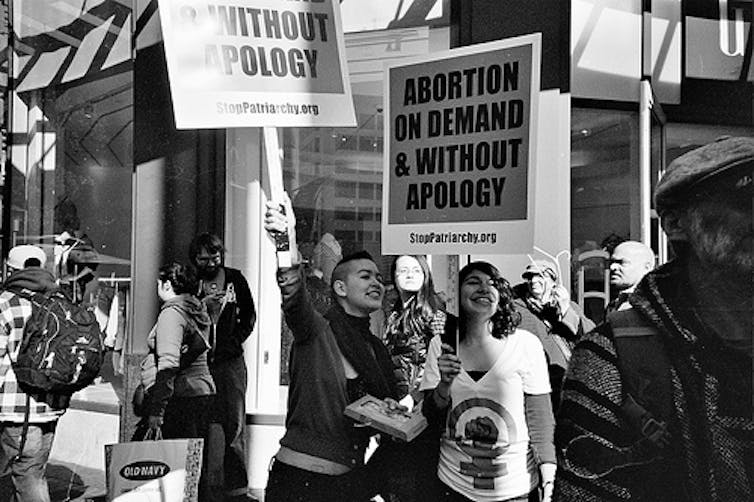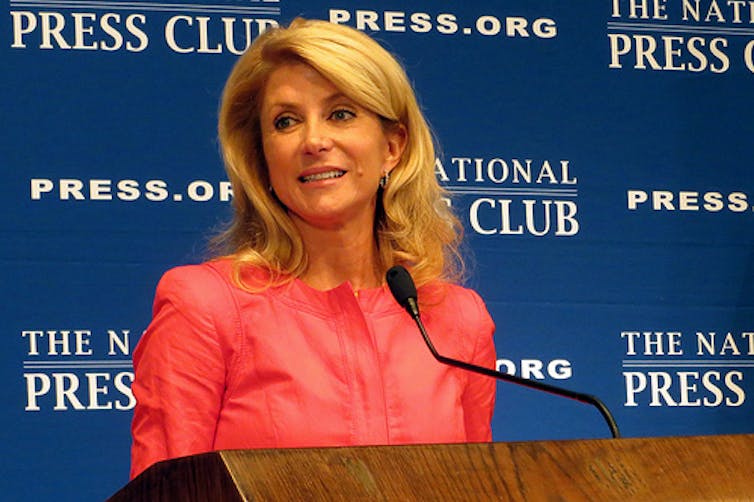TV and film play a part in challenges to reproductive rights
TV and film play a part in challenges to reproductive rights
Michelle Smith, Deakin University
Channel 9’s new series Love Child made its television debut this week. Its storylines are based on the systematic practice of removing babies from young, single mothers from the 1950s to the 1970s in Australia.
After Julia Gillard’s apology to forced adoption victims last year, Love Child reflects the current belief that taking children from their mothers, regardless of good intentions, was not in the best interests of children.
Many of these babies were wanted. Yet social conditions and community attitudes did not support “unwed mothers” to raise children on their own. For women who were faced with an unwanted pregnancy, the taboos surrounding abortion were equally as restrictive.
Historically, television has also struggled to present the notion that women in such a situation even had a choice beyond carrying a baby to term.
When television has depicted women contemplating abortion, it has tended to emphasise negative consequences, including death, for characters who terminate a pregnancy.
A recent study of 385 American television and film plotlines relating to abortion from 1916 until today shows that 9% of fictional characters who have an abortion die as a result. This compares with an actual death rate of one in a million for abortions performed before eight weeks and one in 29,000 for abortions performed between 16-20 weeks.
Not only is the risk of death from abortion radically overemphasised, but women who even contemplate abortion make up another 5% of characters who die, often as a result of murder.
While there have been changes in the representation of abortion over the past century, taken as a whole, film and television have struggled to present abortion as a viable, common and comparatively safe procedure. As the “1 in 3” campaign, which aims to end the stigma associated with abortion, indicates, around a third of all women will have an abortion.
Despite the prevalence of abortion, it took until 2004 for the procedure to be broadcast on television in the UK. The documentary My Foetus showed a woman who was four weeks pregnant undergoing a termination using the manual vacuum aspiration method. Images of aborted foetuses at various stages of development were also screened.
Such attempts to break down taboos about discussing abortion are somewhat belated considering that US television series Maude included an abortion plotline in 1972. Maude, who was unexpectedly pregnant at the age of 47, decided during the two-part episode that an abortion was the best option in her situation. Perhaps owing to its sympathetic portrayal of Maude’s choice, 30 US stations refused to air the episode.
We don’t expect that fictional film and television will provide a perfect mirror image of real-world events and statistics. Tragic or sensational stories have greater potential for ratings appeal than, for instance, uneventful tales of women who have early-term abortions and resume their lives afterwards without major consequences.
However, the ongoing representation of negative outcomes for women who contemplate abortions does suggest continued unease about women’s right to choose.
Gretchen Kisson and Katrina Kimport, the authors of the study of film and television abortions, also point out that the past decade has seen around 9% of these stories conclude with adoption. In the two decades prior, none of the stories they considered resolved with adoption. Where figures for infants given up for adoption in the US have shrunk from around 9% of children born before 1973 to approximately 1% today, screen stories about abortion have turned to adoption plotlines in recent years.

We can look at this change in light of increasing challenges to reproductive rights. During the past three years, US state legislatures have introduced 205 restrictions on abortion. Most memorably, the world watched on in awe last year as Texan Senator Wendy Davis attempted a filibuster to block a bill that threatened the existence of the majority of abortion clinics in the state.
As hard-won rights for women to choose are slowly being eroded, film and television are turning to outcomes that are rare in reality, like adoption, as a narrative solution to unwanted pregnancies.
We have come a long way from the forced adoptions in which mothers were tricked into signing adoption papers or drugged. Yet the negative representations of abortion on our screens are an integral part of a culture that is once again striving to limit women’s abilities to make their own decisions about becoming mothers. ![]()
Michelle Smith, Research Fellow, Deakin University
This article is republished from The Conversation under a Creative Commons license. Read the original article.
Không có nhận xét nào: